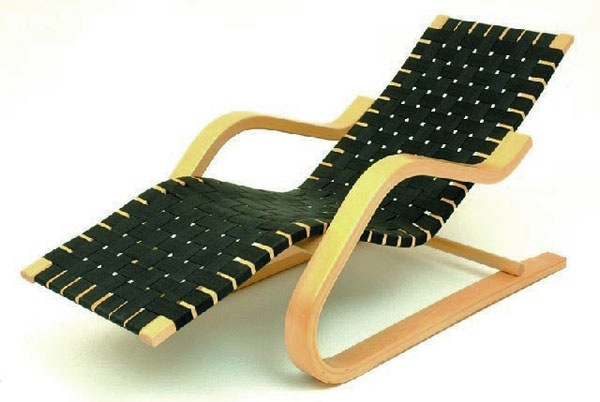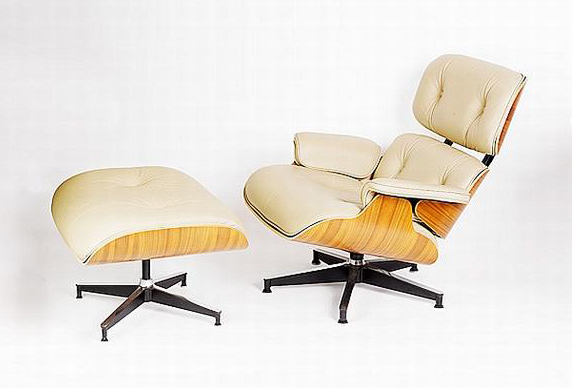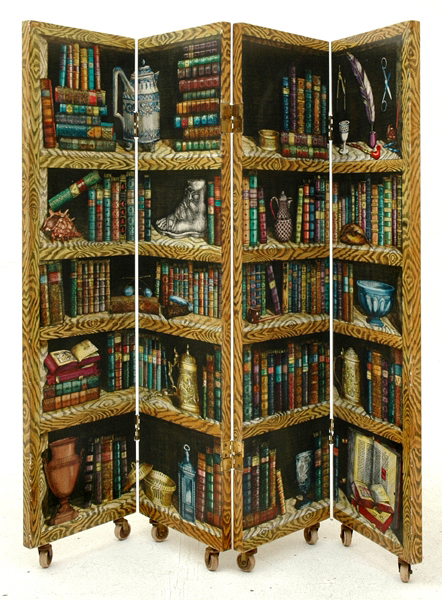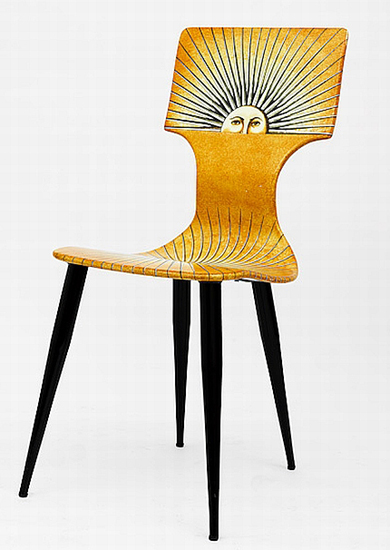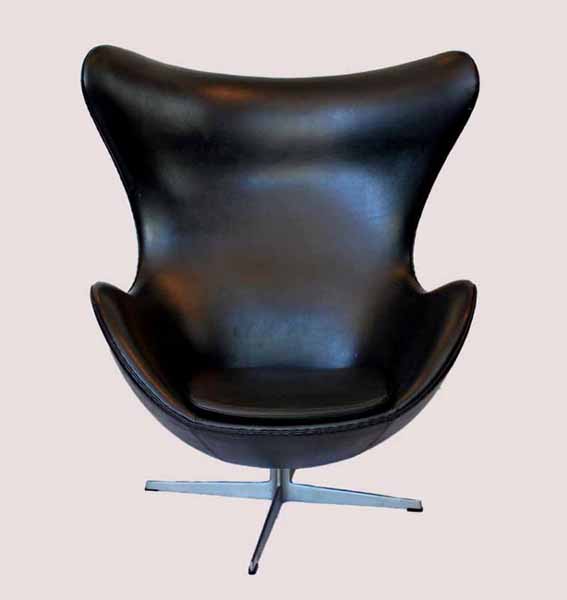Learn about antiques and collectables...
Click on a category below to show all the entries for that category.
Learn about and understand the items, manufacturers, designers and periods as well as the specialist terms used in describing antiques and collectables. Either click one of the letters below to list the items beginning with that letter, or click on a category on the left side of the screen to list the items under that category.
Aalto, Alvar
Alvar Aalto (1898 – 1976) was a Finish architect and designer.
His designs encompass His work includes architecture, furniture, textiles and glassware.
He developed numerous designs for moulded laminated timber (plywood) during the 1930s, including a revolutionary L-shaped leg that was used in much of his furniture.
The success of these designs enabled him and his wife Aino to found the furniture manufacturing company Artek in Helsinki in 1935.
Aalto glassware is manufactured by Iittala.
Aalto’s work, which was well received in Britain and America during the 1930s and ’40s, was produced by Finmar, a British subsidiary, and later by Artek-Pascoe in New York. Artek also began production in Sweden when exports from Finland to America were prohibited during World War II.
Archizoom Associati
Archizoom Associati was an avant-garde group of "anti-design" minded young architects and designers, established in Florence in 1966. Their designs were a form of revolt against what they considered the pretensions of Modernist designers from earlier in the 20th century. Initial products included Pop Art-inspired furnishings, such as the Safari Chair, upholstered with exotic animal skins, and the Dream Bed, which because of its kitschy color and shape, sought to dispel any attempt at good taste in middle class homes.
The group disbanded in 1974.
Barcelona Chair
One of the most enduring forms from the Art Deco period, the Barcelona chair consists essentially of two leather cushions slung on a curving tubular steel frame. Originally designed in 1929 by the architect Mies Van Der Rohe, for the German pavilion for the International Exposition of 1929, which was hosted by the city of Barcelona, Spain. The chairs are still being manufactured by Knoll Inc. but there are numerous unauthorized copies also available.
Casala Furniture
Casala is a Dutch furniture company that was founded in 1948 by the Dutch designer Casimir Zdziarski. The company is based in the Netherlands and is known for its high-quality, modernist furniture designs.
The company's early designs were heavily influenced by the Bauhaus movement and the work of designers such as Le Corbusier and Gerrit Rietveld. The company has since evolved and expanded its range to include a variety of modern and contemporary furniture designs for a variety of settings, including offices, schools, and public spaces.
Their furniture is known for its combination of functionality, durability, and design. The company uses high-quality materials and advanced manufacturing techniques to produce durable and long-lasting furniture. They work with international designers and architects to develop new collections that are functional, comfortable and visually appealing
Casala's products are widely used in the Netherlands and also exported to other countries. The company has become a well-established brand known for its quality and durability
Cassina Spa
Cassina SpA is a furniture manufacturing company specialising in a broad range of furniture including chairs, armchairs, tables, sofas and beds by well known designer.
The company was founded by brothers Cesare and Umberto Cassina in 1927, but it was not until the 1950s that it launched industrial design in Italy and expanded in size and fame.
Designers collaborating with Cassina included Mario Bellini, Gio Ponti, Vico Magistretti, Toshiyuki Kita, Gaetano Pesce, Theodore Waddell, Hannes Wettstein, Philippe Starck, Jean-Marie Massaud, Piero Lissoni, and others.
Aiding the company's growth to the mid 1960s was the large number of commissions for cruise ships, exclusive hotels and restaurants which accounted for a great part of the company's activity right up to the mid-sixties and beyond.
In 1964 the company acquired the rights to manufacture furniture designed by Le Corbusier, Pierre Jeanneret and Charlotte Perriand, the most important names of 20th century design, and a new division, the "Cassina I Maestri" (Cassina Masters) Collection was created. Rights for further designs were later acquired from Bauhaus-Archiv in Berlin and in 1971 the designs of Gerrit Rietveld, Frank Lloyd Wright, and of Charles Rennie Mackintosh in 1972.
Cassina has its own stores in Milan, Paris, New York and Tokyo, as well as authorised distribors throughout the world.
Since 2005 Cassina has been part of the Poltrona Frau Group, founded in Turin in 1912.
Coffee Table
A popular 20th century innovation, so any 'antique' coffee table you see will be an antique table that has been reduced in height to make a low convenient piece for those customers who insist on one. 'Antique' coffee tables are also made up from an antique tray mounted on a specially made stand, or a blanket chest.
Concertina Action / Butterfly Mechanism
"Concertina action" in furniture is a mechanism that allows a piece of furniture to be expanded or contracted. This mechanism is typically used in tables, desks, and other pieces of furniture that need to be able to change size in order to accommodate different needs. Concertina action is also known as "butterfly" mechanism, due to the panels or leaves that open like butterfly wings.
The concertina action typically works by having a number of panels or leaves that are connected to each other with hinges. When the furniture is in its contracted state, the panels or leaves are folded together, taking up less space. When the furniture is expanded, the panels or leaves are pulled out and locked into place, creating a larger surface area.
This type of mechanism is particularly useful in small spaces or for furniture that needs to be easily transported, as it allows the piece to be easily adjusted to fit the space or be made more compact for transportation.
View further examples of Concertina Action / Butterfly Mechanism
Cord
Seats in Danish furniture of the 1940s to 1960s were often finished with Danish cord, a three ply twisted paper cord, which has a similar appearance to rush, which has been used for seating for centuries. As it is available in continuous lengths, unlike rush, the weave patterns are much more intricate.
Eames, Charles and Ray
Born in 1907, Charles Eames developed an interest in engineering and architecture, which he studied at Washington University.
In 1929, while traveling in Europe, he was influenced by the Modernist Movement through the works of Le Corbusier, Mies van der Rohe and Gropius. In 1938 Eames began studying at Cranbrook Academy of Art, sponsored by Finnish architect Eliel Saarinen.
There he met his future wife, Ray Kaiser. Ray assisted Eames and Saarinen’s son Eero on projects for ‘The Organic Design in Home Furnishings’ competition at New York Museum of Modern Art, held in 1940, where they won the two first prizes. Their exhibits utilized innovative manufacturing techniques including a method for moulding plywood.
Eames continued working on the plywood moulding technique, and developed the ‘Kazam! Machine’, a press for moulding plywood, which lead to a commission by the US Navy for limb splints.
Now married, the Eames’ continued their work on plywood furniture, including a moulded plywood chair, which won the accolade ‘chair of the century’ from architectural critic, Esther McCoy.
The Herman Miller company took on the production of this chair in the US and still produces Eames’ designs today.
Other key pieces include the ‘Lounge Chair and Ottoman’ from 1956 and ‘Tandem Sling Seating’, which is still used in airports. They continued their design work, and other major projects in architecture and film-making, into the 1970s. Charles Eames died in 1978 and Ray in 1988.
Fornasetti, Piero
Piero Fornasetti (1913-88) was a Milanese designer, painter, sculptor and interior decorator.
The range of products incorporating his whimsical and often black and white designs include scarves, drink coasters, lamps, umbrella stands, trays, cabinets, chairs, tables, desks, screens and plates and vases.
It has been estimated that by the 1960's there were over 11,000 different items incorporating his designs.
He showed artistic ability as a child, and studied at the Brera Academy of Fine Arts, and later at the Castello Sforzesco school, both in Milan.
After a period of travel to Africa he returned to Milan in 1933, and his designs on silk scarves were seen by noted Italian architect Gio Ponti, who later became his collaborator on various projects including the interior decoration of the Casa Lucano in Milan in 1951, and the ocean liner, Andrea Doria in 1952.
Since his death in 1988, the business in Milan has been continued by his son Barnaba who has revived production of the most popular designs, and produced new designs under the Fornasetti name.
Grant Featherston
Grant Featherston was Australia's leading 'post modernist' furniture designer. He was born in 1922 in Geelong, and gained prominence in 1947 when he produced his relaxation chairs. They were made from plywood and webbing, although some were upholstered with sponge rubber and fabric.
Featherston's philosophy that a chair should follow the body's contours was confirmed in the design of his contour chairs, which were produced for five years from 1951, Plywood was used for the chair's frame, which was upholstered. Examples are shown.
Mild steel and cane were used for the cane-metal chair, designed in 1954. This was followed by the easy chairs of 1955 that were constructed from plywood, iron, rubber webbing, and were upholstered. The townhouse suite followed in 1956.
From 1957 to 1970 Grant Featherston was consultant to metal furniture manufacturer, Aristoc Industries. Chairs were designed and mass-produced, and may still be seen across Australia. Some designs are still being made today. The Delma stacking chair, in particular, was copied by other manufacturers.
The Scape armchair, made in 1960, was highly sculptured and manufactured from a small number of separate parts. These parts were made from plywood and steel. The back and the seat were covered in foam and fabric.
Grant Featherston's name sprang into media prominence in 1967 when his 'talking chair' was displayed at the Australian pavilion at Expo '67 at Montreal. This was followed by the Stem chair in 1969, made mostly from high density polyethylene. Grant worked with his wife Mary to produce some of Australia's most beautifully designed chairs.
From: Carter's "Collecting Australiana", William & Dorothy Hall, published by John Furphy Pty. Ltd. 2005
Hvidt, Peter
Peter Hvidt (1916–1986) born in Copenhagen. After completing his training at the Design School in Copenhagen, he worked at various design firms before setting up his own studio in 1942. In 1944 he opened the Hvidt & Mølgaard studio which he ran with Orla Mølgaard-Nielsen until 1975. They created a number of pioneering sets of furniture including Portex (1945) and Ax (1950), using a laminated technique for production by Fritz Hansen. During their collaboration they also designed many pieces for France and Daverkosen (latterly France and Son and CADO)
Jacobsen, Arne
The Danish architect Arne Jacobsen (1902-71) was born in Copenhagen. As a child he showed an extraordinary talent for drawing and depicting nature. He was educated at the Royal Danish Academy of Fine Arts and the School of Architecture in Copenhagen.
Jacobsen's designs included architecture, furniture, textiles, wallpaper and silverware. He mastered the range of design from large, complex building projects to a teaspoon in a set of cutlery.
His most famous designs became ‘The Ant’, ‘Series 7’, ‘The Egg and The Swan’, and the tableware ‘Cylinda-Line’.
Jacobsen’s architecture includes a considerable number of epoch-making buildings in Denmark, Germany and Great Britain.
‘The Ant’ chair, designed in 1952 for use in the canteen of the Danish pharmaceutical firm Novo Nordisk, became the starting point of his world fame as a furniture designer and became the first of a number of lightweight chairs with the seat and back in one piece of moulded wood.
Model ‘3107’ from 1955 is often merely called ‘The Number Seven Chair’. It was launched in beech, black and white. ‘3107’ is one of the most important success stories in Danish furniture history, and over 5 million originals have been manufactured, as well as countless copies.
'The Egg' is a chair designed by Arne Jacobsen in 1958 for the lobby and reception area of the Radisson SAS hotel in Copenhagen, Denmark, which he also designed.
His simple, elegant and functional designs have a remarkable, timeless appeal and have become international design classics.
Jalk, Grete Juel
Grete Juel Jalk (1920–2006) was a Danish furniture designer. From the 1960s, she did much to enhance Denmark’s reputation for modern furniture design with her clear, comfortable lines. She also edited the Danish magazine Mobilia and compiled a four-volume work on Danish furniture. In 1953, Jalk opened her own design studio. Inspired by Alvar Aalto’s laminated bent-plywood furniture and Charles Eames’ moulded plywood designs, she began to develop her own boldly curved models. Jalk developed many simple sets of furniture for manufacturers, including a high desk and stool, a set of shelves in Oregon pine and a series of chairs with upholstered seats and backs on a curved steel base. Her industrially produced furniture has clear, comfortable lines. Economic in their use of materials, they soon became competitive, increasing Denmark’s international reputation for furniture design. Firms in the United States and Finland have also manufactured some of her lines.
Paul Kafka
Paul Ernst Kafka (1907 – 1972) was one of the most significant furniture designers and makers of the post WW II period in Sydney. Born and trained in Austria at the Vienna University of Applied Arts Kafka and his wife emigrated to Australia in 1939. By the late 1940s Paul Kafka Exclusive Furniture Pty Ltd employed over 20 tradesmen producing bespoke and custom designed and built furniture for mainly Eastern suburbs clients. In the 1960s he undertook a number of major fitout projects for the Sheraton, Chevron and Travelodge Hotels. His signature is complex inlaid wood marquetry frequently in modernist and Art Deco influenced geometric patterns. Many of his most notable designs were created working in tandem with leading Australian postwar architects including Harry Seidler (with whom he shared Viennese origins), Hugo Stossel, Hugh Buhrich and Harry Epstein. It is Kafka's built in and free standing furniture that is a feature of in what is recognised as Australia's foundation modernist home the 'Rose Seidler' house in northern Sydney. Examples of Kafka furniture and design drawings are held in the collection of the Powerhouse Museum, Sydney.
Paulin, Pierre
Born in Paris in 1927, Paulin is widely regarded as one of the most important twentieth century furniture designers. From a young age he had an interest in arts and crafts and went on to study clay modelling and stone carving at the Ecole Camondo in Paris before commencing work at Thonet in 1954. This early exposure to art and sculpture no doubt influenced his later free-form furniture designs when he began working with Dutch furniture maker Artifort in 1958. He was given freedom of expression and through the 1960's and 70s Paulin and Artifort were at the forefront of contemporary design. The 'Mushroom' chair was hugely innovative when it was introduced in 1960 with a tubular steel frame covered with foam. In 1968 he received the commission to refurbish the Louvre and many prestigious awards and international commissions followed throughout his working life. Highlights include the seating design for Expo ‘70 in Osaka and redesigning the private apartments and presidential office of the Elysee Palace.
Poltrona Frau
Furniture manufacturers Poltrona Frau was founded in 1912 in Turin by the Sicilian craftsman and designer Renzo Frau.
Poltrona Frau, now trading for over 100 years, built its reputation on the use of the highest quality materials, outstanding design and craftsmanship, and ongoing research and innovation in style and technique.
Poplar Wood
Poplar wood is classified as a hardwood but it differs from many other hardwoods in its lighter weight and softer texture. The fine grain of poplar wood results in a smooth surface that takes paint and stain exceptionally well, allowing for versatile finishing options.
Poplar is a popular choice for furniture frames, drawers, interior components, and upholstered furniture. Its light weight and smooth surface make it ideal for these applications. Additionally, poplar finds its way into various items like musical instruments, toys, chopsticks, and even cheese boxes due to its neutral taste and odor.
Ressell, Sigurd
Sigurd Ressell born in 1920 this Norwegian designer was first recognised by Niels Vodder in a drawing competition. A prototype made from this drawing went on to become the SR 600 chair and won an award at the Copenhagen Cabinetmaker’s Guild Exhibition. The 'Falcon' chair produced by Vatne Mobler of Norway is without doubt Ressell’s most successful design and one of the most comfortable chairs available.
Roger Mclay
Roger McLay (1922 – 2000) trained at the National Art School, Sydney, and then as an apprenticeship with printing company John Sands in lithography. After serving in World War II from 1939 to 1945, he returned to the Art School from 1945-47.
Roger McLay's Kone chair was contructed from plywood on a painted steel base, with a small amount of rubber to provide stability.
Production of the Kone Chair started in 1948. In its 12 years of production, two styles were manufactured: circular and circular with trimmed sides. Some chairs were upholstered. Like many other mid 20th century furniture designers, mcLay used wood laminate developed during the war, but his unique contribution was not to use moulding to create his chair. Instead the laminate was a single sheet bent into shape and fixed to a metal frame. The first chairs may be identified by the designers name and model. Descon made the chairs from the mid 1950s.
From: Carter's "Collecting Australiana", William & Dorothy Hall, published by John Furphy Pty. Ltd. 2005
Rohe, Ludwig Mies Van Der
Ludwig Mies van der Rohe (1886–1969). When it comes to the big names of twentieth century design, they don’t come much bigger than Ludwig Mies van der Rohe. A pioneering and hugely influential architect and a dedicated and passionate educator and furniture designer. Mies was, first and foremost, an architect and held the role of Director of Architecture at the Bauhaus Design School. In 1908, he took a job with Peter Behrens; his colleagues in that office included Le Corbusier and Walter Gropius. Mies went into private practice in 1913, adding the more impressive Rohe, his mother´s maiden name. Mies, often in collaboration with Lilly Reich, designed furniture for many of his early projects, and most is still in production today. In particular, furnishings for the Tugendhat House and the Barcelona Pavilion have become design icons. These pieces reflect the same philosophical underpinnings that drove his architecture. Both are concerned with the use of space, their forms being defined as much by the space around them as by the structure of the chairs themselves, and employ a striking combination of sleek modernist steel and luxurious leather.
Russell, Gordon
Sir Gordon Russell (1892–1980) came under the influence of the Arts and Crafts movement from the age of 12, after his family moved to Broadway in the Cotswolds. Following service as an officer in World War I, for which he was awarded the Military Cross in 1918, he became a furniture maker and designer. Gordon Russell Ltd. was founded in 1923 to produce furniture and by the 1930s he and his brother Dick had built a reputation as designers of modern furniture based in the Cotswold Arts and Crafts tradition. Elected a royal designer for industry in 1940 and director of the Council of Industrial Design (1947-59) later renamed the Design Council. He was the first chairman of the Crafts Council and was awarded a Knighthood in 1955 for services to design.
Wegner, Hans J.
Hans J Wegner (1914–2007) attended the School of Arts and Crafts in Copenhagen at the age of 22 and worked as an assistant to Erik Møller and Arne Jacobsen before opening his own office in 1943. The real beauty of Wegner’s genius must be seen in context with his collaboration with master cabinetmaker Johannes Hansen. The attitude with which Hansen accepted the young designer’s ideas was the perfect combination between designer and craftsman. Their collaboration went on for many years, and they presented their work at the Cabinetmaker’s show every year from 1941-1966. With his love of natural materials and his deep understanding of the need for furniture to be functional as well as beautiful, Wegner made mid-century Danish design popular on an international scale. With more than 500 different chair designs Wegner is the most prolific Danish designer to date. Wegner’s design went on to win worldwide recognition through the 1950’s and 1960’s and his furniture, in particular his chairs, are to be found in the permanent collections of the world’s most prestigious museums.
